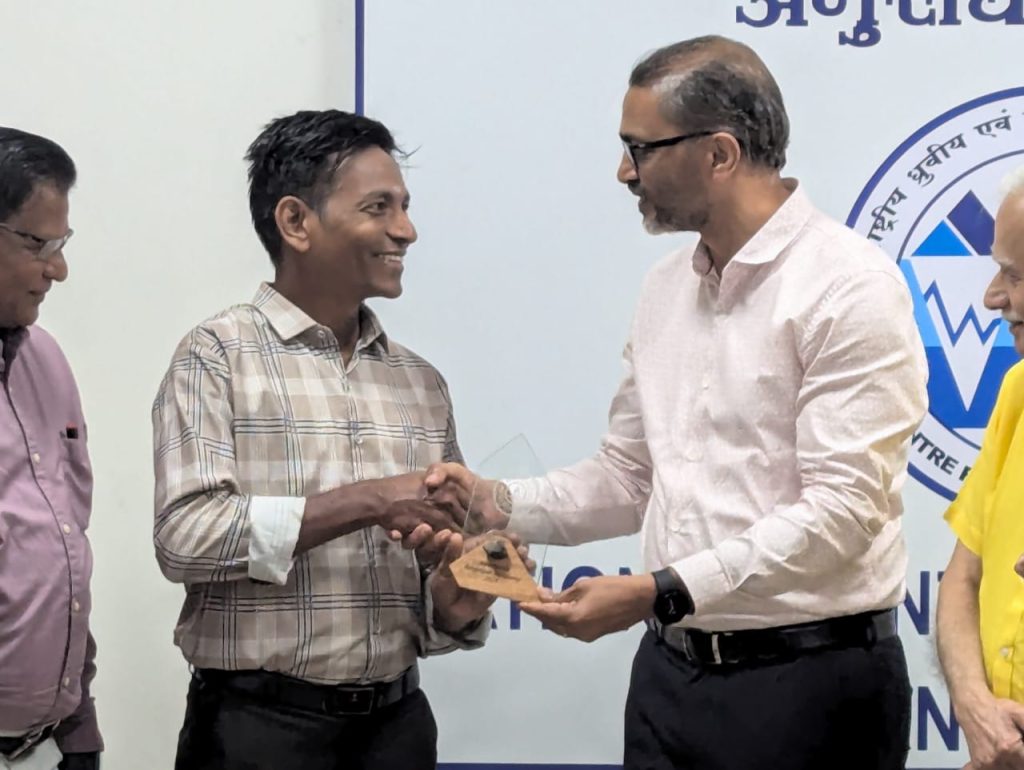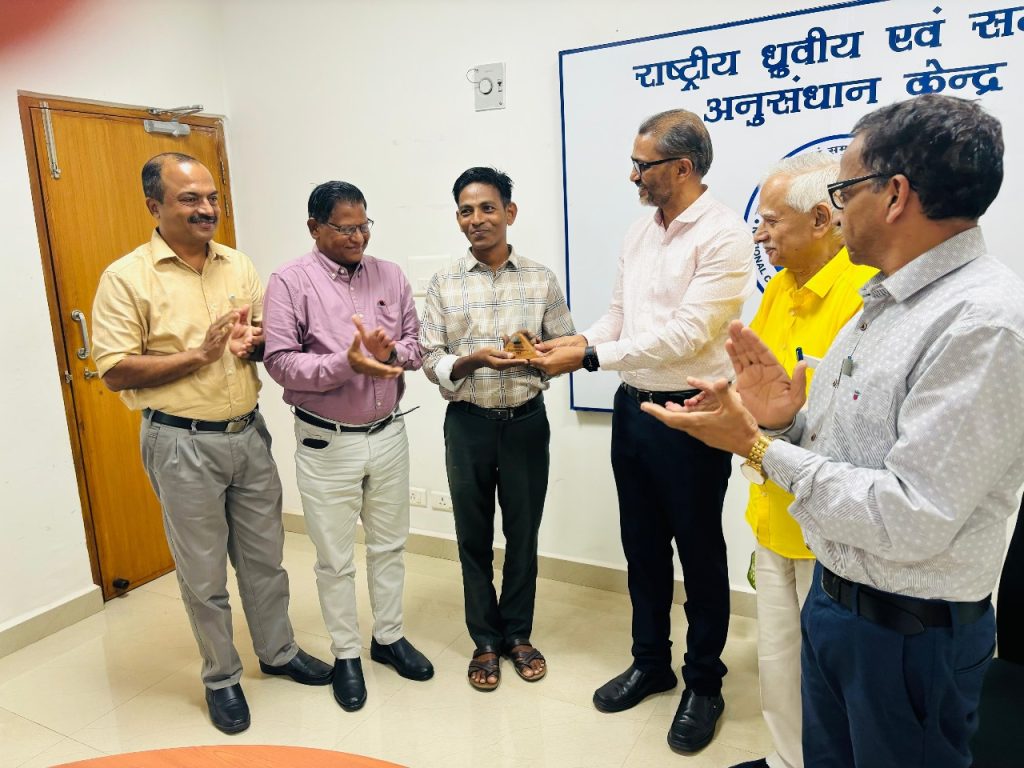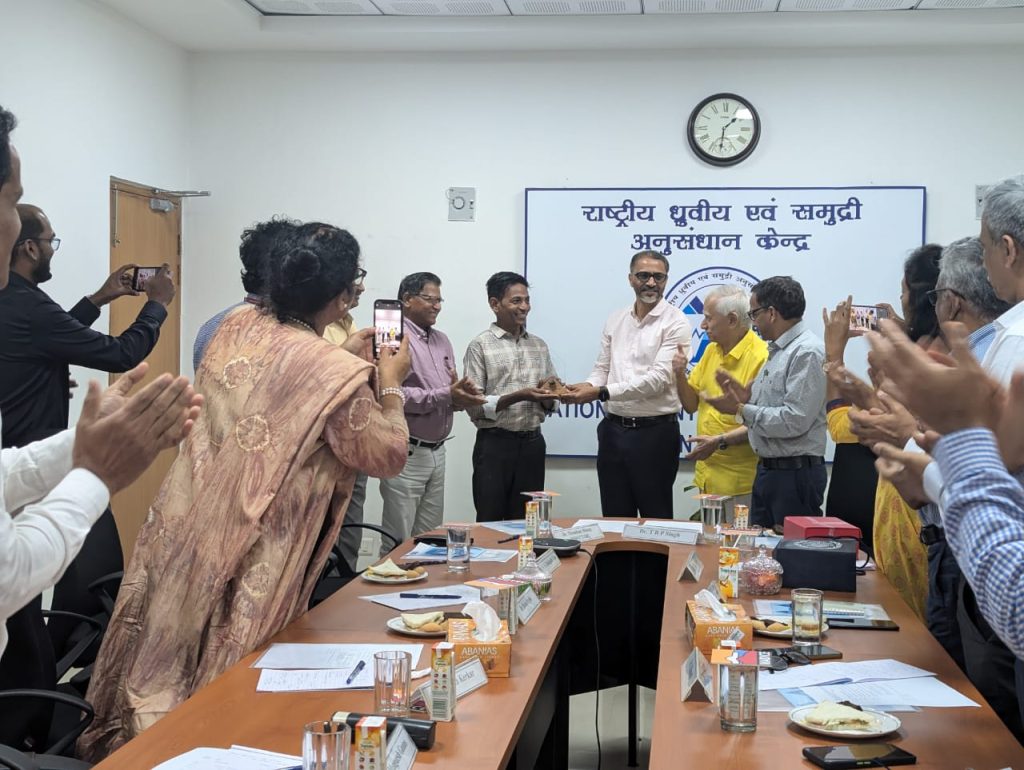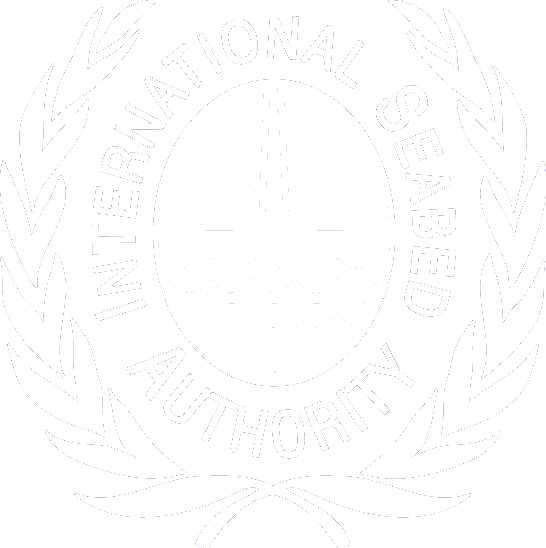Dr. Rengaiyan Periasamy, India
Recipient of the fifth Edition of the
ISA Secretary-General Award for Excellence in Deep-sea Research
Please tell us a little bit about yourself
I am Periasamy Regaiyan, a deep-sea benthic biologist from India. I grew up in Nayaganaipiriyal, a small village in the southeastern Indian state of Tamil Nadu.
I have a master’s degree in marine biology from Bharathidasan University in Tamil Nadu. During my studies, I interned at the Central Electrochemical Research Institute (CSIR) in Karaikudi, India, where I received excellent mentorship and developed an interest in marine biology. I joined India’s pioneering oceanography institute, CSIR – National Institute of Oceanography (NIO), Goa, India, to pursue my dream. I received a PhD grant and graduated from Goa University in 2018. While at NIO, I took part in many coastal and deep-sea expeditions and got an understanding of the taxonomy of benthic invertebrates using both molecular and traditional taxonomic techniques. After my Ph.D., I worked in various public and government sectors (INDOMER Coastal Hydraulics Ltd., Central Marine Fisheries Research Institute, and National Centre for Sustainable Coastal Management), which enhanced my knowledge of the benthic taxonomy.
I am currently a Project Scientist at the National Center for Polar and Ocean Research (NCPOR). I am an integral part of the Indian Prestigious Deep Ocean Mission, working on a project focusing on transdisciplinary research and revolutionary ocean governance. My primary responsibility is collecting baseline environmental data, particularly on the benthic biota associated with mid-oceanic ridge and hydrothermal vent environments and surrounding habitats.
In 2020, I participated in my first hydrothermal expedition on the Indian Ocean ridges (Central Indian Ridge (CIR) and the Southwest Indian Ridge (SWIR)). This expedition has kept many memories of my career because we conducted it during the COVID-19 pandemic. Even though we faced many challenges, we conducted our surveys successfully and deployed a wide range of equipment in the study area. More than 100 deep-sea specimens were collected from previously unexplored regions of different topography environments, such as seamounts, oceanic core complexes, inactive/active sulphide, and plume regions. So far, I have described nine new species from these locations (4 sponge, three coral, and 2 Crustacean), and another 25 species newly recorded in the Indian Ocean have yet to be published.
What are you passionate about?
I find great joy in being involved in science, as it offers endless opportunities to learn and contribute to the betterment of mankind. It is crucial to present scientific facts and interpretations in an accessible way so that as many people as possible can understand. In India, NCPOR and CSIR-NIO are embarking on a significant new chapter in our scientific understanding of the deep-sea seabed. I hope we can share this knowledge with the global scientific community.
What (or who) motivated you in difficult times?
My greatest strength is that I am not easily discouraged professionally and personally. I treat life’s challenges and opportunities the same – as we can learn from both in different ways. I have always taken pride in working hard and being helpful to others without making a fuss. I have an analytical mind and enjoy problem-solving (in the field and the lab), making me easily fit into any team. My mentors describe me as hard-working, reliable, respectful, and pleasant, especially my Ph.D. supervisor Dr. Baban Ingole, who always supported me in my tough times. I have maintained consistent employment throughout my research career and have developed excellent interpersonal skills. Finally, my children’s smiles relieve me of all my pains and challenging times. I hope they will be proud of my achievements when they are old enough to understand them.
What are some of your proudest achievements related to deep-sea taxonomic research?
I felt very proud when I was awarded my Ph.D. in Marine Sciences, having worked hard to earn it, and facing many challenges in the process.
Obtaining deep-sea specimens is challenging under normal circumstances. However, during the COVID-19 pandemic, I overcame numerous obstacles and successfully collected over 100 deep-sea specimens. Every discovery of a new species is a significant achievement, especially when it is published for the world to see.
Getting recognized for my contributions to deep-sea taxonomy, therefore, makes me feel very proud, too.
Could you give examples on how youth could become interested in deep-sea taxonomy? How do you think ISA could assist in this?
The “taxonomic impediment,” a shortage of funding and skilled taxonomists specializing in deep-sea research, limits extensive investigations and the development of new taxonomic methods, thereby hindering progress in understanding deep-sea biodiversity. However, there are some modalities that could help in generating excitement for the field:
- Highlight Unique Species: Showcasing fascinating deep-sea creatures through visually appealing media such as photographs and videos and emphasizing their unusual adaptations and ecological roles.
- Connect to Conservation: Illustrate the importance of deep-sea biodiversity to global ecosystems and the potential impacts of human activities like deep-sea mining and climate change.
- Hands-On Activities: Organize workshops or field trips where youth can engage directly with deep-sea specimens or data. Hands-on experiences foster curiosity and understanding.
- Use Technology: Utilize virtual reality, augmented reality, or interactive websites to simulate deep-sea environments and encounters with organisms, making the subject more accessible and engaging.
- Role Models and Mentors: Introduce youth to scientists and researchers who specialize in deep sea taxonomy. Personal stories and mentorship can inspire and guide young people toward pursuing careers in marine biology.
- Citizen Science Projects: Encourage participation in citizen science initiatives related to deep-sea taxonomy. Involvement in data collection and analysis can empower youth and demonstrate the relevance of their contributions.
- Interdisciplinary Approach: Highlight how deep-sea taxonomy intersects with other fields such as technology, medicine (bioprospecting), and climate science. Showcasing these connections can broaden interest and relevance.
- Education and Outreach: Collaborate with educators to integrate deep-sea taxonomy into curricula. Offer engaging educational materials and activities that align with science standards and curriculum goals.
- Storytelling and Media: Share captivating stories of scientific exploration and discoveries in the deep sea through documentaries, podcasts, and articles. Narrative formats can captivate and inspire curiosity.
- Networking and Community: Create opportunities for youth to connect with peers who share their interests in deep-sea taxonomy. Online forums, clubs, or local meet-ups can foster a sense of belonging and enthusiasm.
Combining these approaches can spark curiosity and cultivate a lasting interest among youth in the fascinating world of deep-sea taxonomy.
If you had the option to give advice to a younger version of yourself, what would it be?
I would tell my younger self to keep working hard and never lose faith when it comes to putting my best efforts into all my endeavors. I would tell myself to dream big and be more active in seeking career opportunities, expeditions etc.




